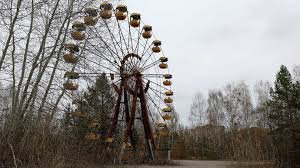On February 14, 2025, an explosive-laden drone struck the New Safe Confinement (NSC) structure over the ruined Reactor 4 at Chernobyl. While the attack breached the outer and inner cladding, the International Atomic Energy Agency (IAEA) confirmed no abnormal radiation readings following the incident.
FCRF x CERT-In Roll Out National Cyber Crisis Management Course to Prepare India’s Digital Defenders
Drone Breaches Shelter, But No Radiological Threat Detected
The drop-off in peace amid geopolitical tensions saw a Russian-made combat drone hit the northern part of the Chornobyl sarcophagus at around 1:50 a.m. local time, per Ukrainian authorities. The strike caused a six-meter hole in the protective enclosure’s northern garage but did not compromise the structural integrity of the inner shield.
IAEA inspectors conducted a thorough on-site examination within 24 hours. They found that while the outer layer and insulation suffered damage, the internal containment remained sealed, with radiation levels at the site well within normal limits.
International Response and Site Security
Ukraine’s President Zelenskyy released images showing smoke emerging post-strike, with emergency crews deploying thermal imaging and water to control smouldering insulation. The IAEA report highlighted that trenching and non-structural fire suppression helped contain risks without further spread.
Russian authorities denied launching the drone, alleging the incident might be a Ukrainian fabrication aimed at affecting diplomatic talks. The IAEA did not assign blame, underscoring the urgent need for strict security around former nuclear sites.
Algoritha: The Most Trusted Name in BFSI Investigations and DFIR Services
A Wake-up Call for Nuclear Site Defense
Though no radiation leak occurred, the attack breached a highly sensitive nuclear landmark. Experts warn that any compromise of the New Safe Confinement erected in 2016 to seal in radiation could pose catastrophic risks. This event fuels calls for arms control and enhanced physical and digital defences at nuclear containment regions.
About the Author – Anirudh Mittal is a B.Sc. LL.B. (Hons.) student at National Forensic Sciences University, Gandhinagar, with a keen interest in corporate law and tech-driven legal change.


